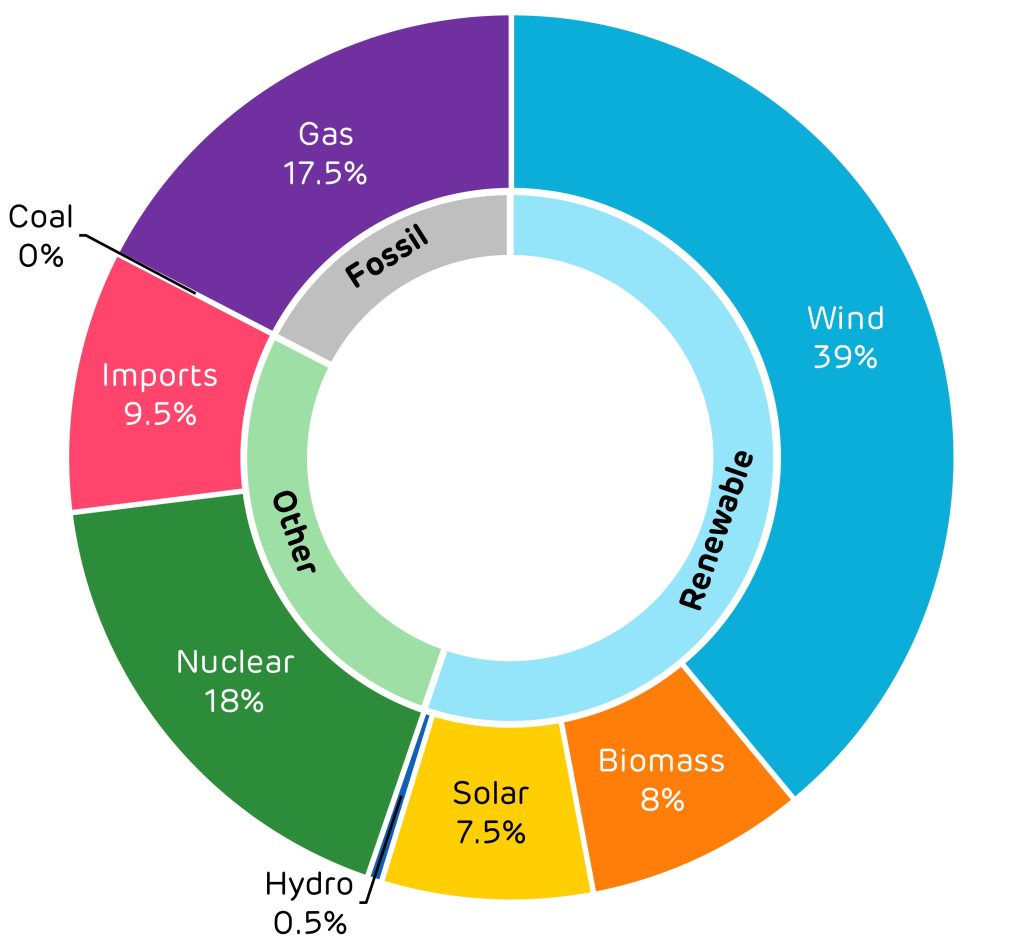
Incredible progress has been made over the last couple of decades towards greening our grid. Coal is now supplying a very small percentage of our power, and this is likely to fully disappear in the next few years. Gas is the only remaining fossil fuel on our grid. We mad roughly 28 gigawats of electricity from gas in 2018 (last normal year before epidemic). There are plenty of ways to get this from clean sources
As an example, 1 megawatt of solar panels takes roughly 4 acres, and costs about 1 million pounds. Therefore, 1 gigawatt would take roughly 7 square miles and cost roughly 1 billion. That means to replace 28 gigawatt hours of gas generation with solar, would cost roughly 28 billion. The batteries would cost about 2 billion for a similar quantity. In terms of area, we would need roughly 150 miles, which is roughly 2/3 of all the rooftops of the UK housing stock. If, however, all UK commercial governmental and industrial buildings have their roofs covered in solar panels, this would likely take a great deal of the capacity needed. Even if you assume we need extra for night time power, we can not be talking more than 50 billion.
I am not saying that the government needs to invest this now. However, as gas powerplants do not last more than about 25 years, we can assume that by 2050 all the current ones would be decommissioned. If as each gas powered plant goes offline it was replaced with solar and batteries, the cost would be roughly £1.8 billion a year while a huge cost to many countries, would essentially be a rounding error in the UK.













